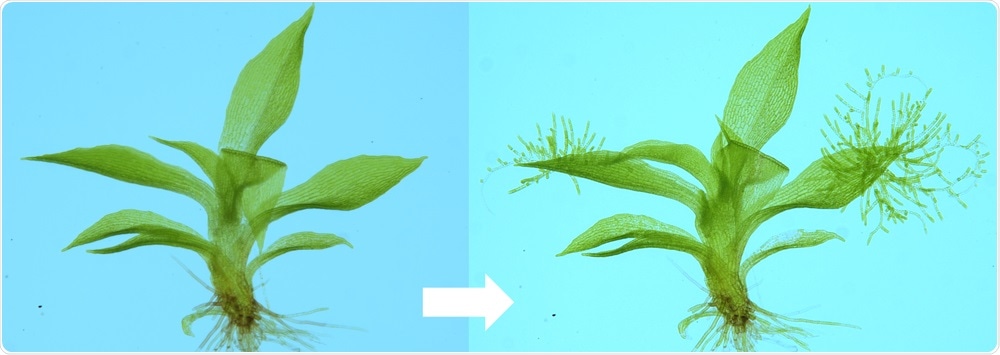An international team of researchers has discovered that when DNA in the moss Physcomitrella patens is damaged, it causes cells to reprogram on their own to change into stem cells and reproduce new plant bodies. This phenomenon has been described as a special environmental adaptation of plants by the researchers.

DNA damage causes cells to reprogram themselves into stem cells and regenerate new plant bodies in the moss Physcomitrella patens. Image Credit: National Institute for Basic Biology.
The study involved researchers from the National Institute for Basic Biology (NIBB) in Japan, Huazhong Agricultural University in China, and the Czech Academy of Sciences in the Czech Republic.
In the case of animals, cells with considerable DNA damage go through cell death, or apoptosis, and are completely removed. Published in the Nature Plants journal, the latest results tell a different kind of story for moss cells.
Ms Nan Gu, a Special Inter-University Researcher from NIBB and a graduate student from Huazhong Agricultural University under the mentorship of Dr Chunli Chen, and her colleagues observed that when the DNA of the moss is impaired, it is instantly repaired.
In addition, the cells containing the repaired DNA transform into stem cells, which can synthesize an entire plant body, just like fertilized egg cells.
I was shocked by the result, because animal cells select to die, but plant cells select to produce new offspring.”
Nan Gu, Special Inter-University Researcher, National Institute for Basic Biology
The DNA of Physcomitrella plants were severely damaged when they were immersed in a DNA-damaging solution for a period of 6 hours. But the impaired DNA was restored to nearly its original state in just a single day.
Following this, the researchers triggered the STEMIN1 gene—a master regulator of reprogramming. The STEMIN1-positive cells ultimately changed to stem cells and continued to form whole plants with leaves and stems.
It has been known that, in plants, differentiated cells around dead cells can become stem cells. However, this is the first discovery that differentiated cells with damaged DNA themselves become stem cells.”
Dr Yosuke Tamada, Study Co-First Author, National Institute for Basic Biology
“This phenomenon we discovered is a strategy for environmental adaptation, especially in plants, which are not able to escape from adverse environments as quickly as animals,” stated Professor Mitsuyasu Hasebe from NIBB, who headed the research group.
Source:
Journal reference:
Gu, N., et al. (2020) DNA damage triggers reprogramming of differentiated cells into stem cells in Physcomitrella. Nature Plants. doi.org/10.1038/s41477-020-0745-9.